Alright, so you’re thinking about picking up a reverb pedal, huh? I get it, you’re looking to add some space and depth to your sound, or maybe you just want your guitar to not sound so flat and, you know, boring.
Let’s be honest – reverb is the way to go. But let me tell you, there are a lot of options out there. I mean, seriously, it’s enough to make anyone’s head spin. 😵
No worries though, I’ve been there, done that, and I’m here to guide you through it all.
What Does a Reverb Pedal Do? (And Why You Probably Need One)
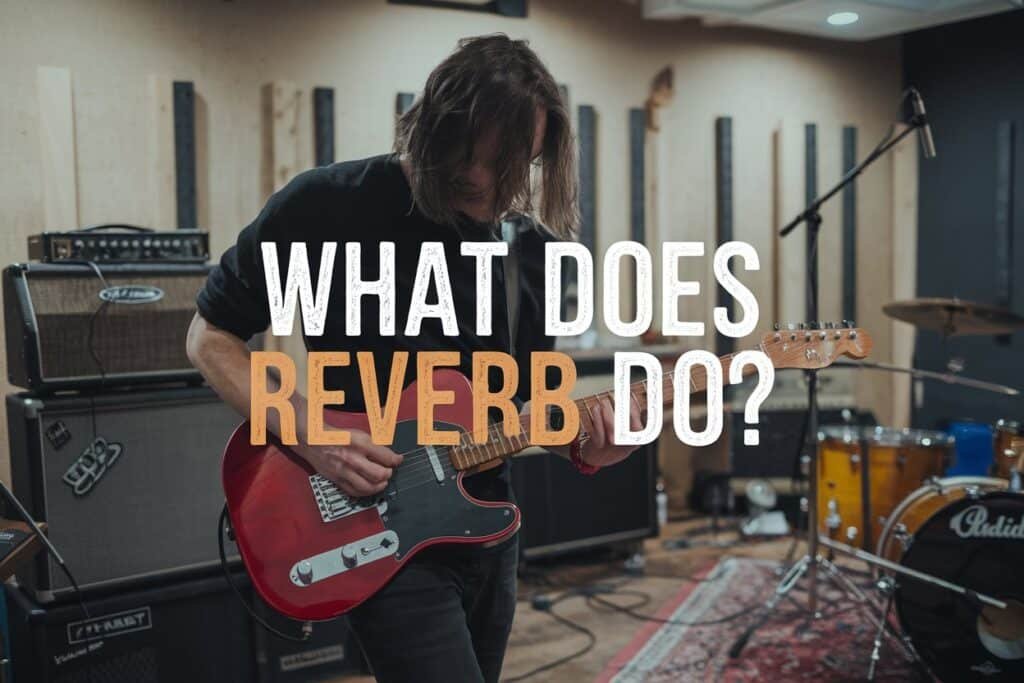
Here’s the deal. Reverb pedals simulate the natural echo you’d hear if you played in different spaces, like a small room, a giant cathedral, or even a creepy cave. It’s all about adding atmosphere to your sound, making your guitar feel bigger, more alive, and way more immersive.
Think of reverb like adding a dash of seasoning to your sound. Without it, your tone can feel dry and one-dimensional.
A good reverb pedal can turn that simple guitar line into something much more dynamic. Makes your guitar sound like it’s swimming through space. Cool, right? If you’re serious about your tone, you need it. Simple as that. 😉
For those who are looking for cheap effects, have a look on our list of top 6 reverb pedals under $100.
The Different Types of Reverb Pedals (And Which One’s Right for You)
Let’s break this down because not all reverb pedals are the same. There are different flavors, each bringing its own vibe to the table. And trust me, you don’t want to use the wrong one in the wrong place unless you really enjoy sounding like you’re playing in an airplane hangar.
Spring Reverb: Vintage Vibes
Spring reverb is like the OG of reverb effects, straight outta those vintage amps. It gives you that unmistakable, “boingy” sound. Surf rock, old blues, all that good stuff? Yep, that’s spring reverb working its magic. It’s raw and bouncy.
- Best for: Blues, surf rock, classic rock.
- Example of sound: TC Electronic Spring Reverb
- Tip: Careful not to crank it too high, or your sound’s gonna get a bit too wild and loose. Trust me, less is more on this one. 😬
Plate Reverb: Smooth and Polished
Plate reverb is all about that clean, smooth vibe. Imagine a big metal sheet giving off echoes (yeah, that’s how they originally made it). Nowadays, it’s electronic, but it keeps that polished sound, adding space without getting too gritty.
- Best for: Clean tones, studio recordings, vocals.
- Example of sound: Electro-Harmonix Holy Grail
- Pro Tip: Great for when you want depth without losing clarity in your mix. If you’re aiming for that “pro studio” tone, this is your jam.
Hall Reverb: Big and Grand
This is your “I’m playing in a cathedral” reverb. Hall reverb makes your guitar sound massive, like you’re in a concert hall. It’s expansive and can make even the simplest notes feel epic. Go ahead, play an open G chord and feel like a rock god.
I recently wrote an article about 5 reasons why this reverb pedal is worth it, so if you’re up for it – check it out 😉
- Best for: Ambient, post-rock, orchestral.
- Example of sound: Strymon BigSky
- Advice: Keep an eye on decay, or you’ll lose clarity and get swallowed in your own echo. Trust me, drowning in reverb sounds fun until it’s not. 🙂
Room Reverb: Natural and Subtle
Room reverb gives you a more realistic, smaller space vibe. It’s like you’re playing in a decent-sized room—nothing too crazy, but enough to add a bit of liveliness to your tone. It’s the “no frills” option, and that’s okay. Sometimes simple works.
- Best for: Indie, folk, acoustic.
- Example of sound: Boss RV-6 (Room Setting)
- FYI: It’s perfect for adding that live feel without overdoing it. Great for recordings where you want a realistic, live vibe.
Modulated Reverb: Dreamy and Ethereal
Wanna get weird? Modulated reverb’s your go-to. It takes regular reverb and adds a bit of chorus or other effects to give you a swirling, dreamy sound. Think shoegaze and ambient vibes. It’s not for everyone, but if you want to trip out a bit (musically, of course), this is where you start.
- Best for: Shoegaze, dream pop, ambient music.
- Example of sound: Eventide Space
- Heads-up: Too much can make your tone sound way out there, so dial it back until you find the sweet spot. Trust me, unless you’re playing in outer space, keep it chill.
Why Every Guitarist Needs a Reverb Pedal
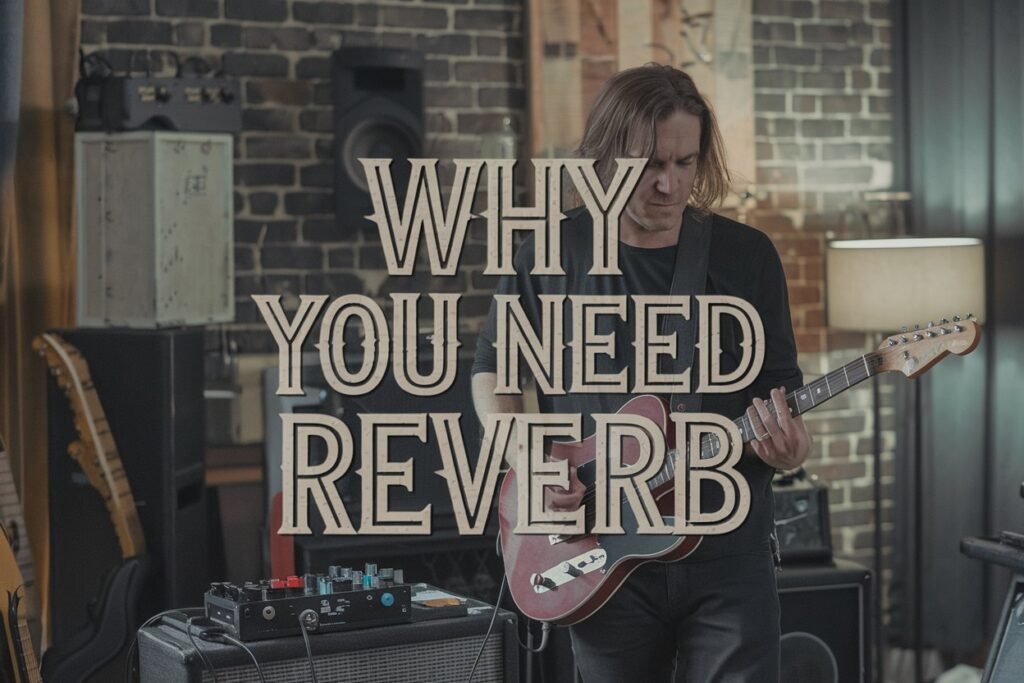
Still on the fence? Let me break it down. You ever notice how some guitarists’ tones just sound bigger, more alive, than others? Nine times out of ten, it’s a touch of reverb doing the heavy lifting. Here’s why you should grab one:
- It adds depth and dimension: Without reverb, your guitar sounds flat. With it? You get that full, immersive vibe.
- It enhances your tone: Clean tones shimmer more, distorted tones feel more powerful. It makes everything sound just… better. Don’t argue with me on this one. 😉
- Covers up mistakes: Messed up a note? No big deal. Reverb smooths over little flubs. You’re welcome.
- Fills out your sound: If you’re playing solo, reverb makes your guitar sound fuller, like it’s filling up more space. Perfect for bedroom shredders.
Reverb effects are also often used in worship music. If you like that vibe, make sure to read this guide on the best pedals for worship!
Reverb Pedal vs. Amp Reverb: What’s the Difference?
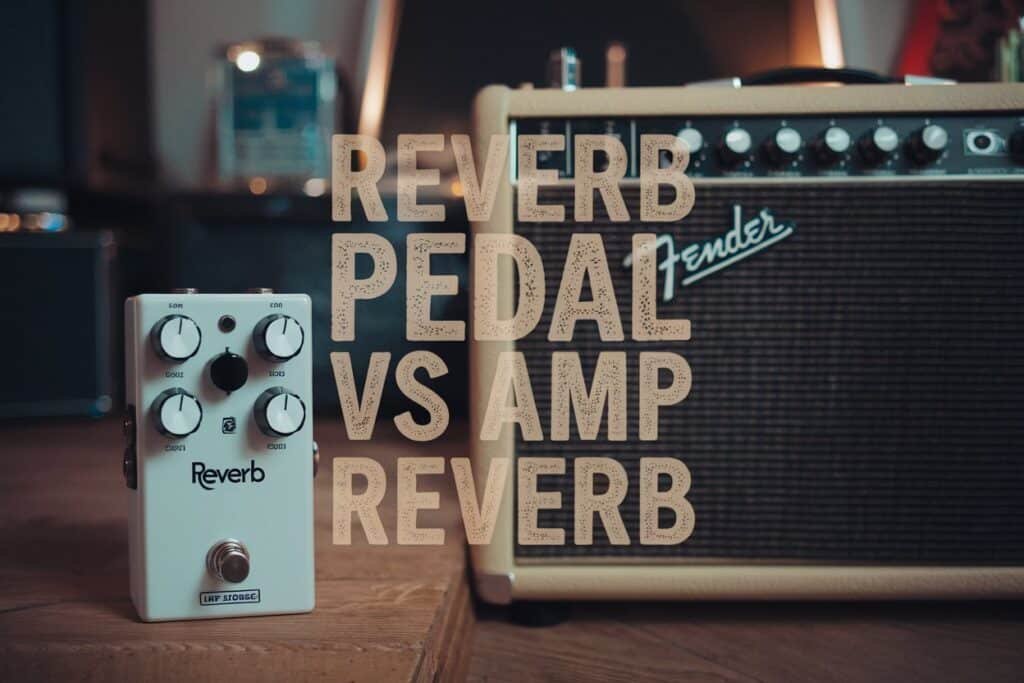
I know, I know. “My amp already has reverb, why do I need a pedal?” Here’s why: Amp reverb is often limited. It’s usually just a basic spring reverb, and you don’t get much control. That’s fine if all you need is a little bit of that vintage twang, but if you want versatility, a pedal is the way to go.
With a pedal, you get a bunch of different reverb types (plate, hall, room, etc.), and you can tweak all the settings to get exactly the sound you want. Plus, they’re way easier to swap in and out than amp reverb.
Bottom line? If you’re serious about shaping your tone, grab a reverb pedal. Or don’t, but don’t complain when your tone’s a bit flat. 😉
How to Use a Reverb Pedal: Key Settings to Know
Reverb pedals usually have a bunch of knobs that let you dial in the exact sound you’re looking for. Here’s what they do:
- Decay: Controls how long the reverb effect lasts. Short decay is tight and snappy, long decay is all about those endless echoes.
- Tone: Adjusts whether your reverb sounds bright and crisp or dark and mellow.
- Pre-Delay: Adds a small gap between the note and when the reverb kicks in. Helps your guitar tone stay clear.
- Mix: This is the balance between your dry signal and the reverb. More mix = more reverb in your sound.
Pro Tips:
- Don’t overdo it with the mix. A little reverb can go a long way.
- Pre-delay can help prevent your notes from getting lost in the wash.
- Most people put their reverb pedal at the end of the signal chain, but you do you.
For more tips on guitar gear, visit our YouTube channels: Best Guitars Now (English) and Strefa Gitar (Polish)
Best Reverb Pedals for Every Genre
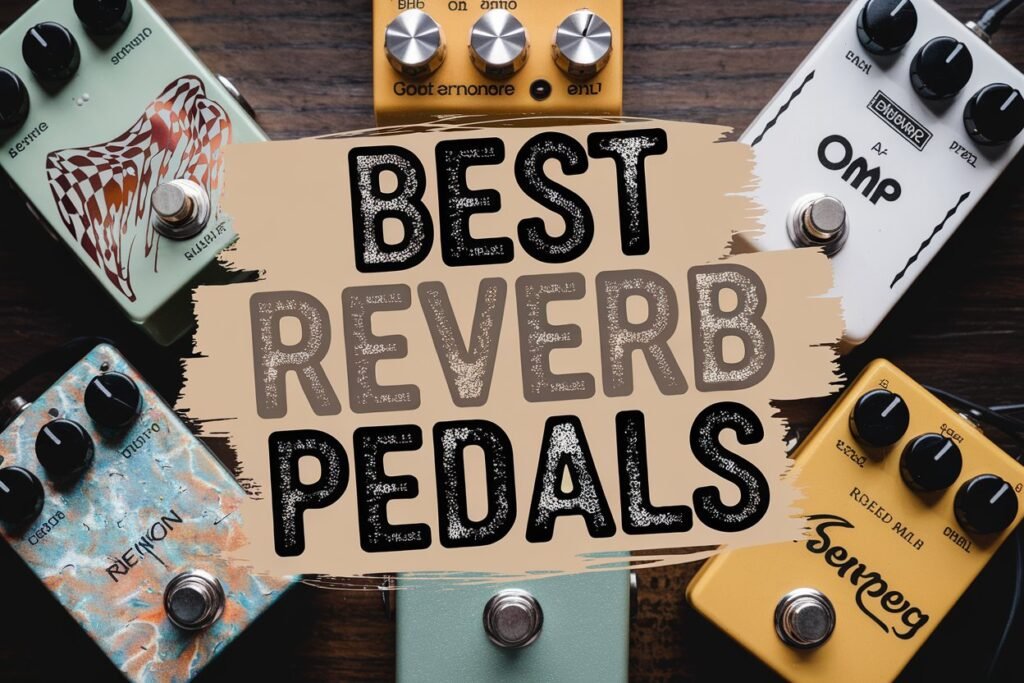
Here are my top picks for reverb pedals depending on your style. No matter what genre you’re playing, there’s a pedal for you.
- Rock/Metal: Boss RV-6 – Built like a tank and super versatile. It works well with distortion.
- Blues/Country: Electro-Harmonix Holy Grail – Classic spring reverb that’ll give you all the twang.
- Ambient/Post-Rock: Strymon BigSky – The holy grail (no pun intended) for lush, expansive sounds. Pricey, but worth it.
- Pop/Indie: TC Electronic Hall of Fame – Easy to use, versatile, and perfect for adding some sparkle.
For those who are into shoegaze, have a look on our list of top 10 shoegaze pedals (including reverb!).
Common Reverb Pedal Mistakes (And How to Avoid Them)
One of the most common mistakes people make with reverb pedals? Overusing them. Yeah, it’s tempting to crank up that reverb to 11 and make everything sound huge, but it can also make your tone muddy if you’re not careful.
You want just enough to add some depth without turning everything into an echo-y mess.
Another thing to keep in mind is picking the right reverb for the song. If you’re playing fast, technical riffs, using a long, drawn-out hall reverb might make things sound messy.
Something tighter, like a room or plate reverb, would be better. Finally, don’t forget to adjust the mix level. Too much reverb, and it’ll drown out your playing. Keep the balance right so your original tone still shines through.
Advanced Tips for Pro-Level Reverb Tone

Once you’ve mastered the basics, there are a few tricks you can use to take your reverb game to the next level. For starters, try running your reverb in stereo.
By sending your signal through two amps or speakers, you can create a much wider, more immersive sound. It’s great for recording or playing in big spaces.
Another cool trick is to layer different reverb types. Try adding a short room reverb alongside a longer hall reverb. It’ll add texture and depth without letting the reverb get too overpowering.
And if you really want to get fancy, combine your reverb pedal with a delay pedal. Delay repeats your notes, and reverb fills in the space, creating huge, atmospheric soundscapes. Just be careful not to overdo it, or your sound could get pretty muddy. Don’t say I didn’t warn you. 🙂
For our Polish readers: visit our Polish guide on how to choose a delay pedal 😉
FAQs: Everything You Need to Know About Reverb Pedals
1. Do I need a reverb pedal if my amp has reverb?
Short answer: yes. Pedals give you way more control and options than amp reverb ever will.
2. Where should I put my reverb pedal in the signal chain?
Usually at the end, after your other effects. That way, it doesn’t get drowned out by distortion or modulation.
3. What’s the difference between reverb and delay?
Reverb simulates natural echoes in a space, while delay repeats your notes in rhythmic intervals.
4. Can I use a reverb pedal with an acoustic guitar?
Yep! Reverb works great on acoustic, adding warmth and depth to your tone.
5. How much reverb should I use?
Start small and work your way up. If the reverb starts to overshadow your playing, dial it back.
6. Should I use reverb live?
Yes, but keep it subtle. The natural acoustics of the venue might add enough reverb on their own.
7. Can I use a reverb pedal on vocals too?
Definitely! Many reverb pedals sound amazing on vocals, especially plate reverb.
Conclusion: Is a Reverb Pedal Worth It?
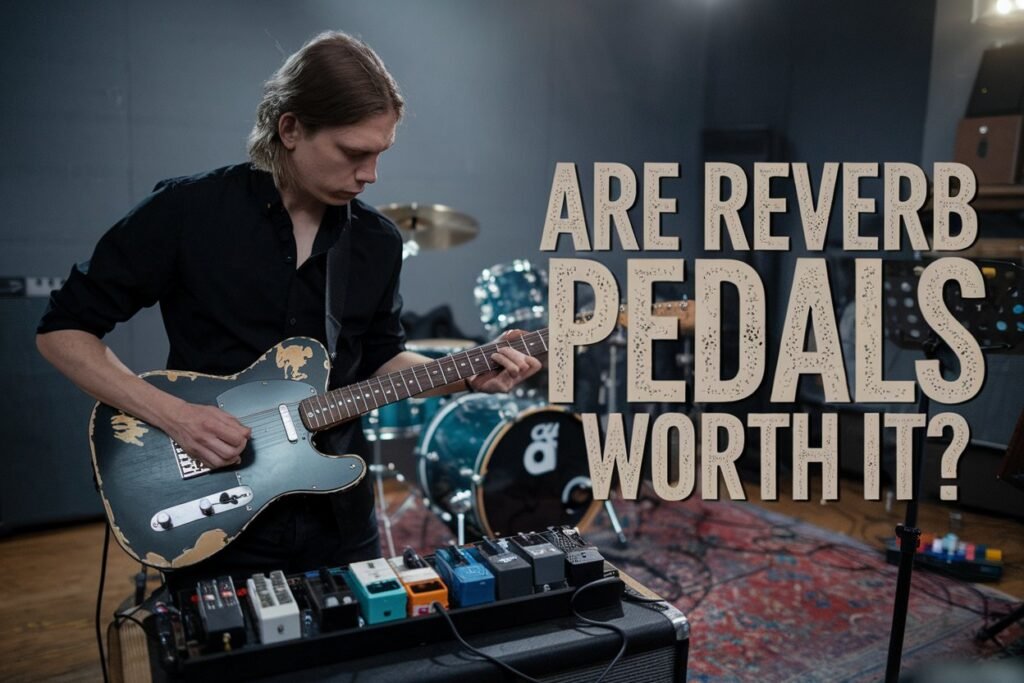
To sum it up? Yes, 100%.
Whether you’re practicing at home, recording in a studio, or playing live, a reverb pedal can seriously elevate your sound. It adds depth, fills out your tone, and gives you a ton of creative freedom.
Sure, amp reverb can get the job done in a pinch, but a dedicated pedal gives you way more control and flexibility.
So, if you’re serious about your guitar tone and want to take your playing to the next level, a reverb pedal is a must-have. Trust me, once you start using one, you’ll wonder how you ever played without it.





